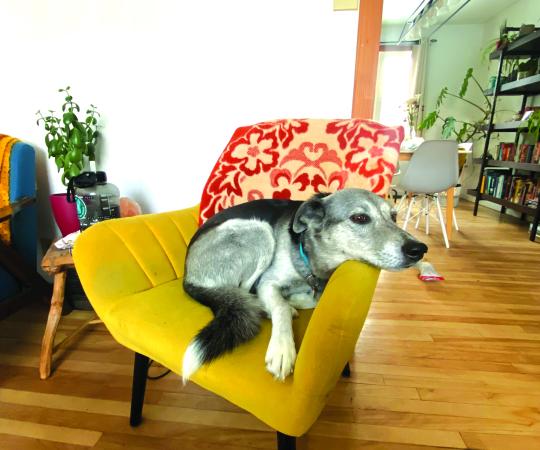Though its name is different now, a small building in downtown Yellowknife was once called the Roman Empire Building. I’d walk by it and imagine a lonely, clerkish emperor on the top floor, sitting behind an old wooden desk adorned with busts of Julius Caesar and Marcus Aurelius, looking at the ledgers of 2,000 years of gradually fading activity and balancing the books. Like the Hudson’s Bay Co., which went from powerful land-owner and business giant to fashionable department store, the grand old empire was neither gone nor what it once was but it was still physically there on this, its one remaining piece of land.
In 2011, a year before the Roman Empire Building changed its name to the MacKay Building (the Scots were always the bane of the empire), a band of artists moved into an old church a couple blocks away. By the end of the year it had become a commune, an incubator of ideas, a birthing ground for collaboration. At first they staked out rooms and turned them into galleries, but the exhibits leaked into the hallways and basement. There were visitors, but they were soon handed hammers and paintbrushes and let loose. The artists—painters, musicians, photographers, general low-key miscreants—had been given free run of the church by a local developer, who was planning to level it in less than a year if the artists and city couldn’t find funding, and a lot, to move the perfectly functional old church to another location. They called themselves the YK ARCC (like Noah’s), though on grants it became the properly bureaucratic Yellowknife
Artist-Run Community Centre.
The citizenry came to formal events in which they would view painting exhibits, or sit in the pews of the great hall and watch local bands play. But you could walk in any day or night and someone would be building some apparatus or a bunch of drunk and talented musicians would be ad-libbing on the stage. Sometimes howling could be heard by passers-by on the street outside, or strange lighting would come out from the spaces around the old wooden church doors. There were, quite understandably, misinterpretations of what was happening there.
No philanthropist swept in to save the ARCC’s new home, and the plan for demolition was formalized. The developer was rooting for the ARCC, and rumour has it he would refuse their attempts to pay him rent or heating bills. But it had to go. A new office building was due to be constructed on that land. Had the building been saved, though, the ARCC’s tenure there couldn’t have reached its zenith. The temporality of the structure gave them the freedom to do anything to it.
A man walked into the offices of Yellowknife’s local newspaper with a tale of debauchery and moral corruption. As it was due to meet with wrecking ball, the ARCC held a Wrecking Ball on Halloween. Everyone played a part in transforming the old church into a psychedelic dreamland; much like the odd noises and sights that sometimes percolated into the street outside, they were easy to misinterpret. The shaken man had a chance to walk through it before the wrecking ball smashed through. I didn’t hear his exact words but they were recounted to me, an editor at the time, as going something like: “I’ve never seen anything like it. There were condoms everywhere, a two-way mirror in a room with a bed, vulgar art—they were having orgies. In a church!”
Of course, it was not an orgy but rather a licensed, public party. That shock and horror, though, gives you a fine idea of how visceral the building’s transformation had been. There was a bedroom set up like a sleazy motel with a two-way mirror, and there was seating arranged in the room on the other side, and there were condoms scattered everywhere. As you walked around with your beer suddenly you would find yourself a voyeur—nothing risqué happened, but those seated behind the mirror were watching people who thought they were alone. The unsuspecting wanderers would enter the next room and see that they weren’t. A major artery hallway had been transformed, with foam and sheets, into a vaginal canal, in case you were overwhelmed by everything—life, the party and all that—and wanted to return to the womb. Every room was someone’s mind manifest. The walls and form of the building had finally given up wholly to the art.
Shortly afterwards it was levelled. An office building was erected in its place. The ARCC is still around, holding workshops and hosting galleries while moving from small-room-above-a-store to temporary-studio-space to vacated-office-floor—all paid-rental space and none of it slated for demolition. Walk around downtown Yellowknife with your eyes open and you might see a sign on some building directing you to X room on X floor, where an idea is being kept alive at great, concerted effort.










